9 Can’t-Miss Art and Design Exhibitions to Catch in a City Near You This March 👀
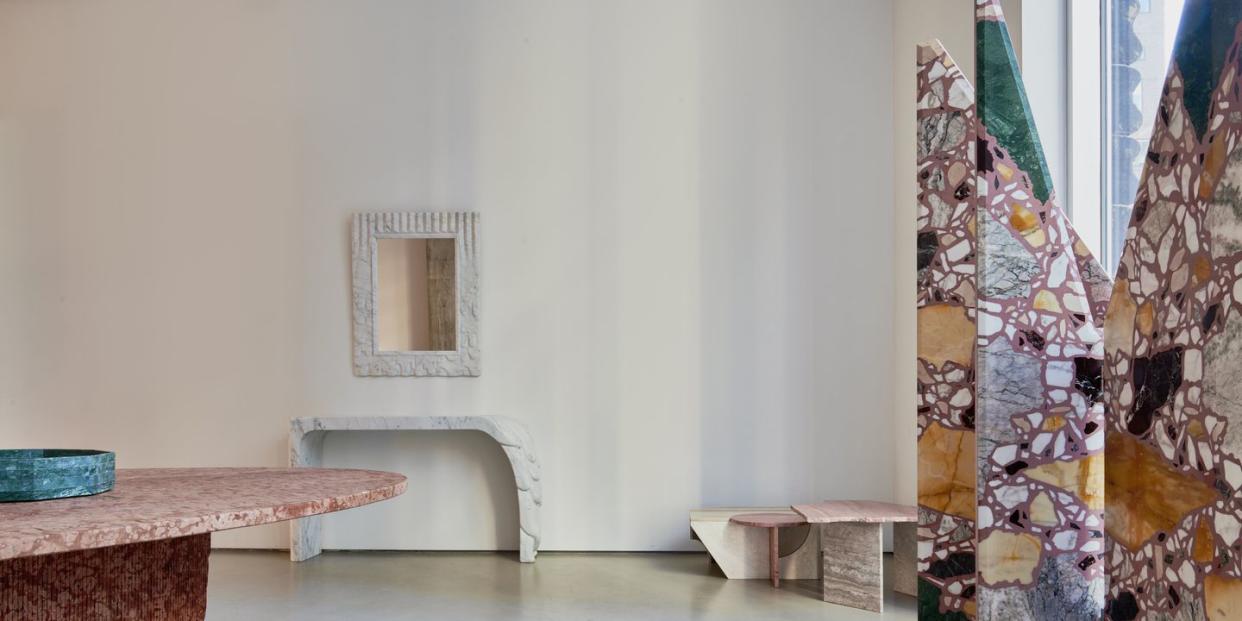
- Oops!Something went wrong.Please try again later.
"Hearst Magazines and Yahoo may earn commission or revenue on some items through these links."
With spring swiftly approaching, creativity abounds. From new to old, large to small, design has us thinking about what a fresh start looks like. Below, our editors have gathered some of the favorite exhibitions on view this month and beyond.
“Dear Future” at the Future Perfect
Los Angeles, California
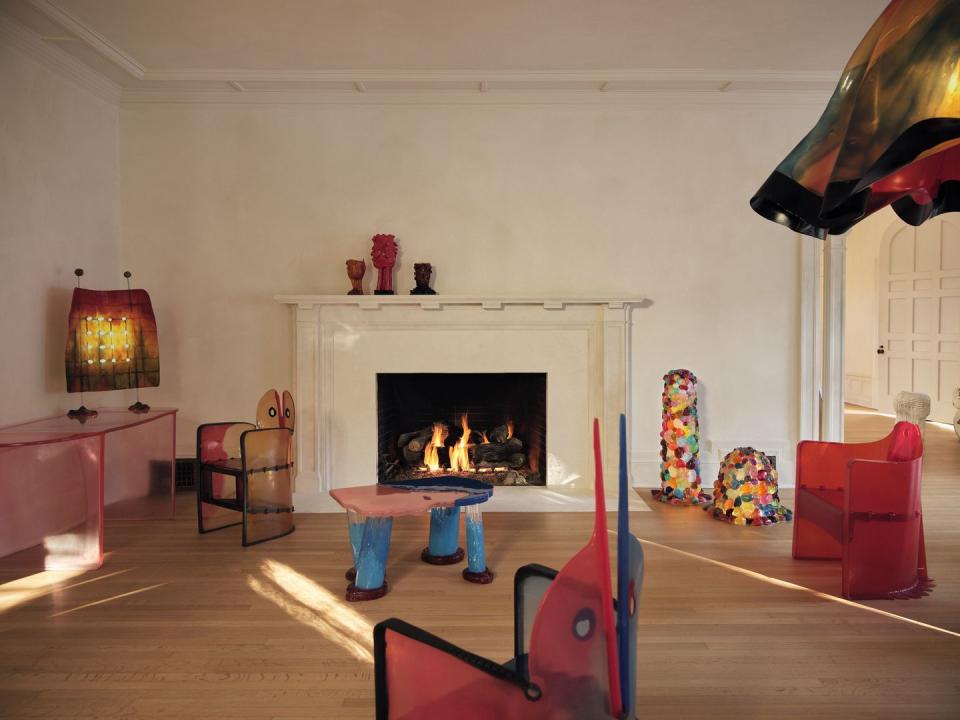
It would be easy for the Future Perfect to present a Gaetano Pesce retrospective—the 83-year-old Italian designer has certainly produced enough design-world icons over the years. Instead, his latest exhibition looks forward rather than backward. “Dear Future,” housed in the Future Perfect’s cinematic Los Angeles outpost, combines never-before-seen Pesce with recognizable classics like the B&B Italia Up chair (here rendered entirely in recycled cork). Naturally, gelatinous resin shapes abound, including a vibrant new series of Nobody’s Perfect chairs, expressive lamps from the Some of Us collection, and a series of increasingly amorphous vessels. “Ever since I was young, I have discovered that I have a particular attraction for everything that was supposed to occur,” reflects Pesce in a statement. “In other words, for all that is new arriving from the future.” On view through March 31. —Helena Madden
Lamp Show at Head Hi
Brooklyn, New York

Head Hi, a hybrid bookstore and coffee shop adjacent to Brooklyn’s Navy Yard, will mount its fourth annual Lamp Show, bringing together artists, designers, craftspeople, and collectors in celebration of the humble lamp. This year’s exhibition features more than 50 table, floor, and pendant lighting designs, including the above bent-metal beauty from Armando Aguirre, head of interiors for the A-List design firm Studio Mellone. “I like the idea that an object made from a modest material can live next to something precious or expensive based solely on the integrity of its design,” Aguirre tells ELLE DECOR. “Raw steel will patina pretty quickly, showing both its materiality and its history.” We love to see it. Other introductions include a folded aluminum table lamp from Michael Yarinsky of the Office of Tangible Space and new work from Dylan Davis and Jean Lee of Ladies & Gentlemen Studio. On view through April 8. —Sean Santiago
“Andrea Branzi: Contemporary DNA” at Friedman Benda
New York, New York
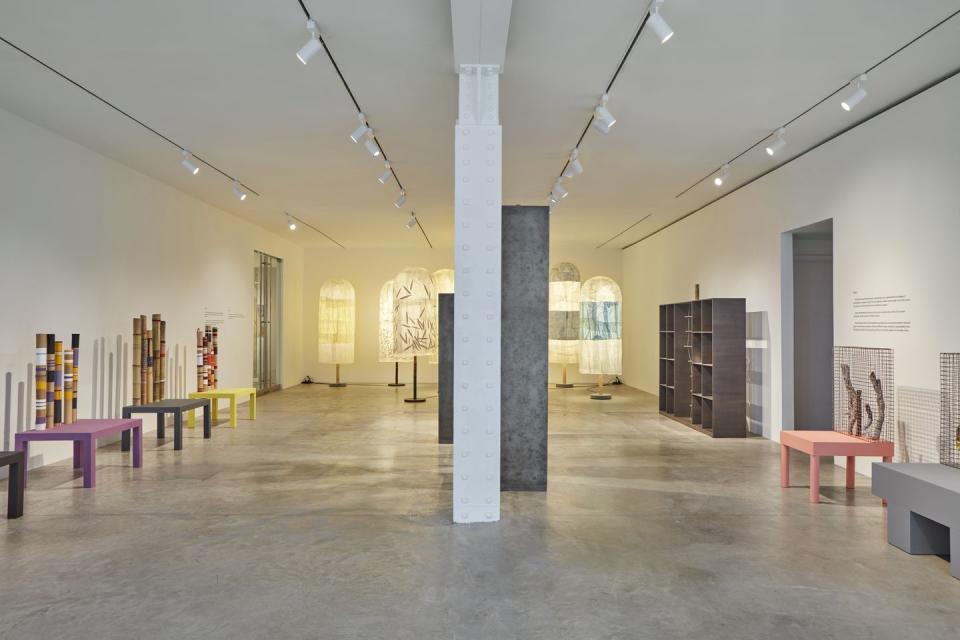
Architect and designer Andrea Branzi’s ouevre, though quieter than his Memphis Group counterparts, has been marked by a penchant for education, natural materials, architectural rigor, and playful levity rendered in more muted tones than his postmodern peers. Branches, steel, and clay meet to form chairs, tables, and shelves of varying size and varying degrees of function. In “Contemporary DNA,” Friedman Benda’s third solo show of Branzi’s work, three new bodies of work—Roots, Germinal Seats, and Buildings—interact like different parts of one whole. In his past work, Branzi has often suggested furniture and buildings to be living parts of human life, an argument that is bolstered by the lively interaction of the seats, lamps, and shelves on view in this exhibition. Branzi’s use of bamboo particularly excites, making up the spines for floor lamps and the backs of several chairs. More seating takes on a nearly vitrinelike quality, with painted tree roots encased in metal mesh as backrests. Elsewhere, bamboo meets patinated aluminum in his so-called buildings—hybrid shelves and room dividers that belong “both to the language of architecture and of the domestic environment,” says Branzi. Of the 21 works on view, every piece has its own spirit, ranging from stern to wildly off-kilter. On view through April 22. —Camille Okhio
“Marmo” at Artemest
New York, New York
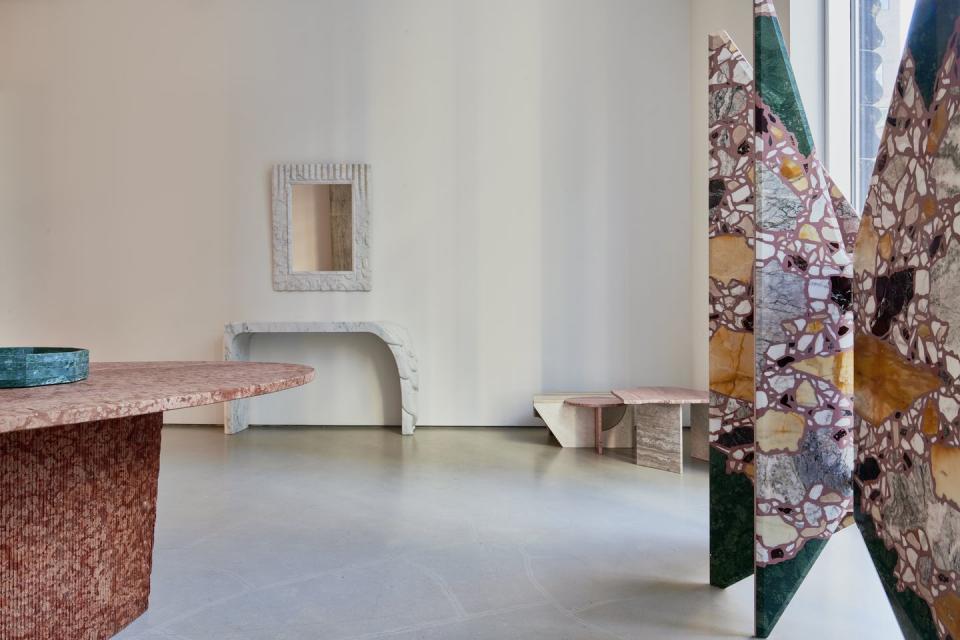
Artemest, the one-stop online shop for all things Italian design, presents a sprawling exhibition of varied marble works at its New York City Galleria space. Dubbed “Marmo,” the show tasks myriad Italian artisans with reimagining and rethinking the rigid, jewel-like material—one that has a long history tied to the rolling hills of Italy. Highlights include a chair from UpGroup, which stacks a rainbow of marble hues together, as well as a jaw-dropping, fanlike screen by ELLE DECOR A-Lister Hannes Peer. Homewares abound, too, including a series of vases and trays by Manuel Coltri that deftly render marble in an interlaced patchwork pattern; green stone vessels by Paolo Ulian offer a more pared-back take on the versatile material. On view through April 30. —H.M.
“Rich Man, Poor Man: Art, Class, and Commerce in a Late Medieval Town” at the Met Cloisters
New York, New York
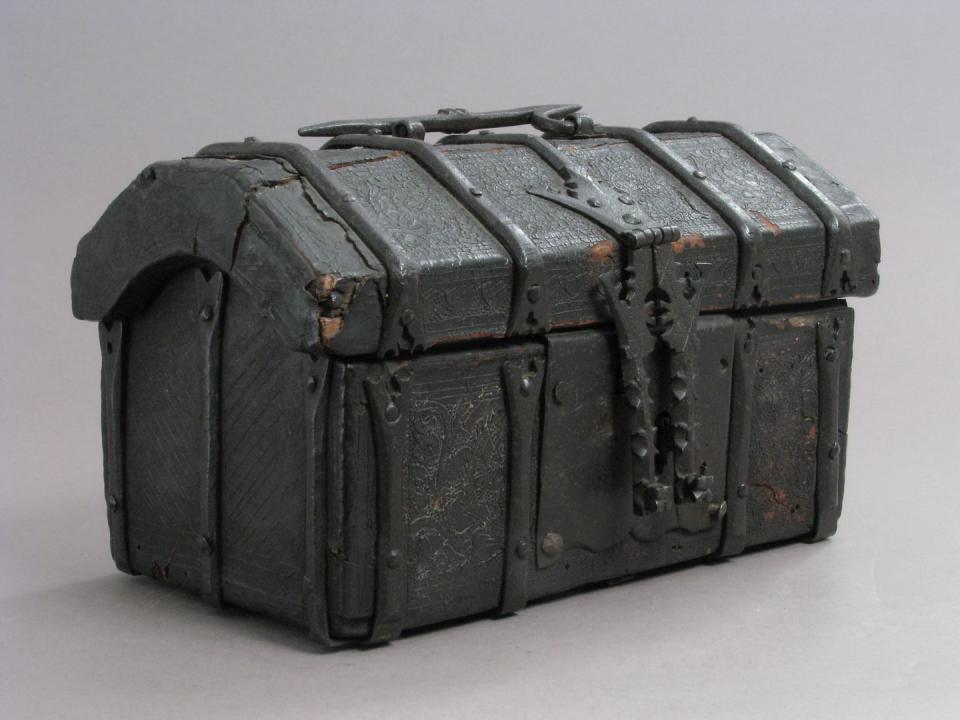
Capitalism might be a relatively new invention in the grand history of human life, but the impact of commerce and competition on society is a tale as old as time. Centered on a set of relief sculptures commissioned by 16th-century merchant Henry Hamlyn to decorate his home’s exterior, “Rich Man, Poor Man” at the Met Cloisters explores the developing tastes of a newly emerging middle class in medieval England. Over 50 objects spanning several media, including furniture, textiles, glass, and currency, paint a picture of a discerning, aesthetically inclined economic group. But along with that discernment came a distinct classicism with the peasant class as its victim. The timber reliefs that Hamlyn commissioned to decorate his home—depicting couples quarreling, a jester with a decidedly sinister energy, and a peasant holding a club—suggest that violence was intrinsic in this socioeconomic bracket. “Rich Man, Poor Man” takes these rather dark suggestions and presents them in a digestible, clever way. Among the treasures on view that round out the cultural narrative of the show are transportive pieces from the Cloisters’ permanent collection, like a fully intact French staircase enclosure from the late 15th to the early 16th century, alongside heavily embroidered 16th-century cushion covers (one depicting Judith and Holofernes), Netherlandish candlesticks in the form of court jesters, jewelry, and hilariously, silver spoons. On view through August 20. —C.O.
“Emmett Moore: Victory Garden” at the Museum of Contemporary Art, North Miami
Miami, Florida
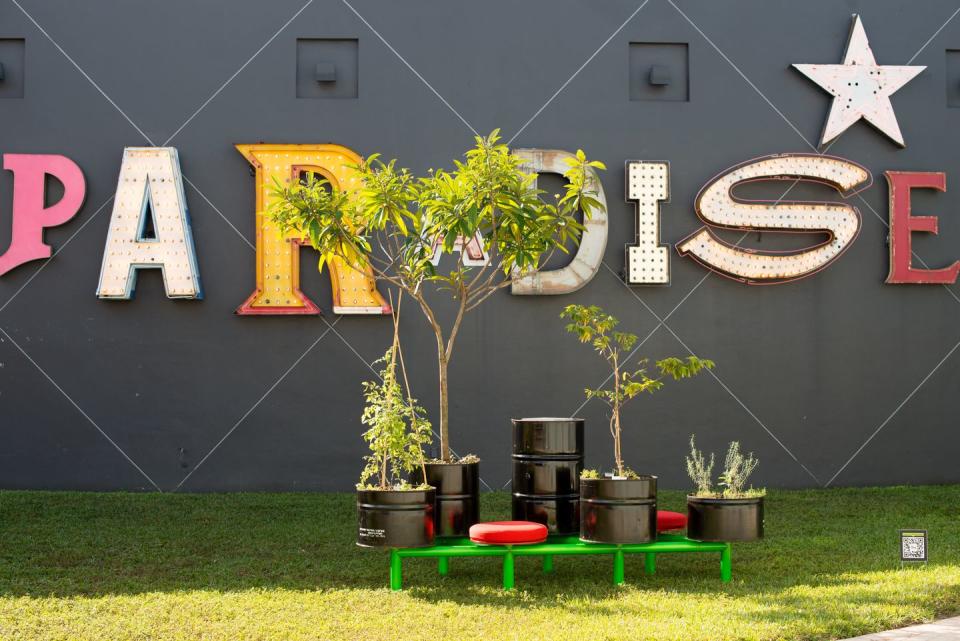
Miami-based artist and designer Emmett Moore explores past and future worlds with verve and diligence. Never sacrificing looks for concepts, he has made dreamy seating out of used T-shirts and large-scale, functional grottoes embedded with discarded objects like sunglasses, car keys, and flip phones. Community engagement is often a central element of his work, as it is in his recent installation, “Victory Garden,” at the Museum of Contemporary Art in North Miami. Scattered throughout the museum’s courtyard are self-contained agricultural units disguised in bright hues with seating attached. As a creative response to the ever-looming bogey of food scarcity, Moore utilized steel drums (a nod to the cultures surrounding the museum) as planters, within which low-maintenance, edible plants take root. Here, design is paired with community-conscious programming, inviting and encouraging the museum’s immediate neighbors to learn about self-sustaining agricultural practices in a fun, safe environment. On view through June 25. —C.O.
“Intertwined: Wangechi Mutu" at the New Museum
New York, New York

A complete survey of Wangechi Mutu’s career spans the entirety of the New Museum, including its glass facade, coalescing more than 100 works that explore the legacies of colonialism, globalization, and African and diasporic cultural tradition. Called Intertwined, the exhibition also steps back to highlight the important role that
New York institutions have played in the development of Mutu’s practice. On view through June 4. —Laura Raskin
“Picasso Celebration: The Collection in a New Light" at Musée National Picasso
Paris, France
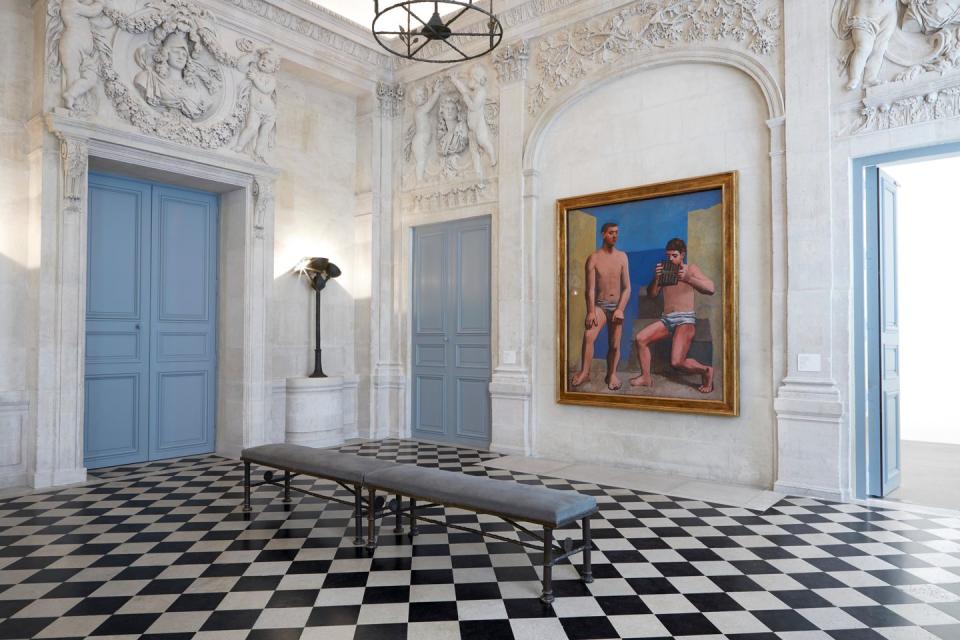
To honor the 50th anniversary of Pablo Picasso’s death, the Musée NationalPicasso-Paris invited British designer Paul Smith to curate masterpieces from the
museum’s collection. After all, the two share a love of objects, dress, and playfulness. Smith also invited contemporary artists like Mickalene Thomas and Chéri Samba to contribute works of their own in response to Picasso’s oeuvre. On view through August 27. —L.R.
“The Mashrabiya Project" at the Center for Art in Wood
Philadelphia, Pennsylvania
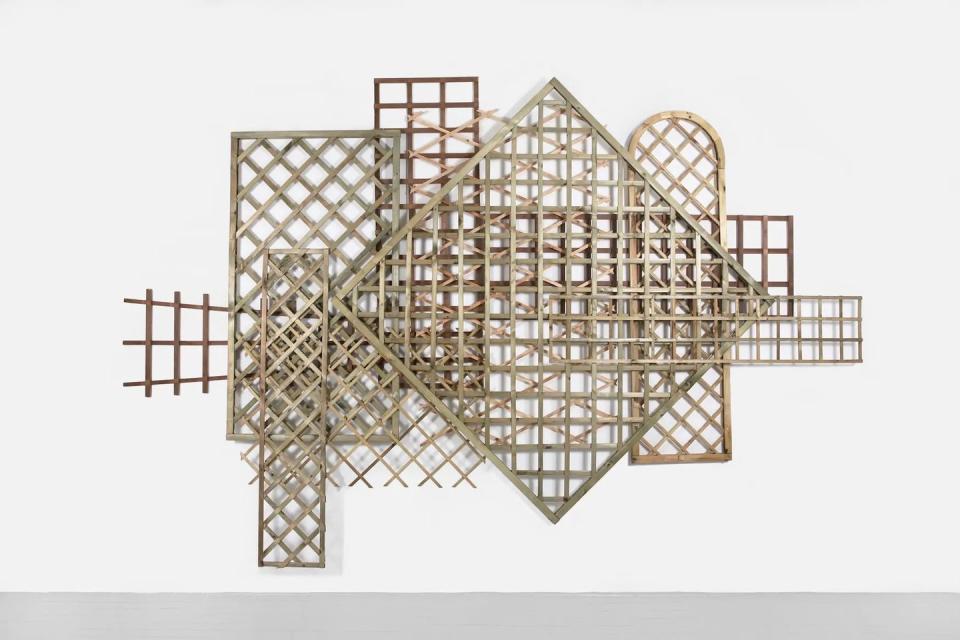
An exhibition at the Center for Art in Wood takes a fascinating starting point: the art of the
mashrabiya, the wood-turned lattice screens that have been a key feature of Islamic architecture since ancient times. For the show six international artists, including Susan Hefuna and Hoda Tawakol, were commissioned to create works based on the cultural significance of the craft. On view through July 23. —L.R.
You Might Also Like

